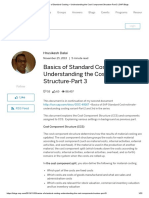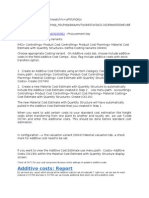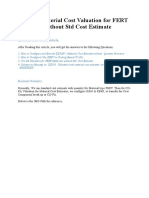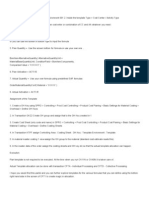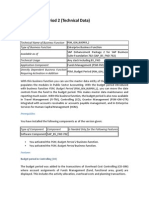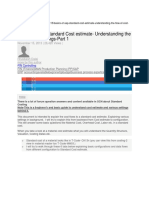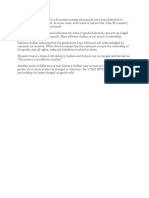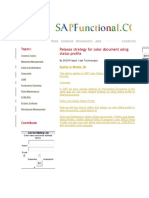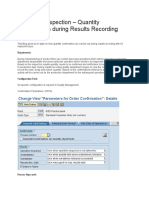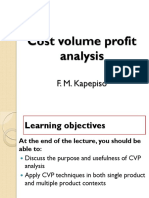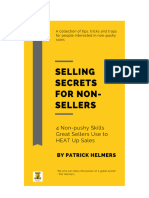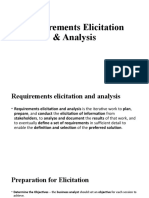100% found this document useful (1 vote)
693 views7 pagesCost Component Structure
This document summarizes the cost component structure (CCS) in standard costing. The CCS determines how material costing results are grouped into cost components like material costs, labor, overhead, etc. The CCS also defines which costs are fixed, variable, or for inventory valuation. Two example CCS (Z1 and Z2) were created for analysis purposes. Screenshots show how costs are displayed in cost estimates and reports according to the assigned CCS. The next documents will cover costing sheets, activity planning, and integration with production planning.
Uploaded by
PRATAP SAPMMCopyright
© © All Rights Reserved
We take content rights seriously. If you suspect this is your content, claim it here.
Available Formats
Download as DOCX, PDF, TXT or read online on Scribd
100% found this document useful (1 vote)
693 views7 pagesCost Component Structure
This document summarizes the cost component structure (CCS) in standard costing. The CCS determines how material costing results are grouped into cost components like material costs, labor, overhead, etc. The CCS also defines which costs are fixed, variable, or for inventory valuation. Two example CCS (Z1 and Z2) were created for analysis purposes. Screenshots show how costs are displayed in cost estimates and reports according to the assigned CCS. The next documents will cover costing sheets, activity planning, and integration with production planning.
Uploaded by
PRATAP SAPMMCopyright
© © All Rights Reserved
We take content rights seriously. If you suspect this is your content, claim it here.
Available Formats
Download as DOCX, PDF, TXT or read online on Scribd
/ 7


